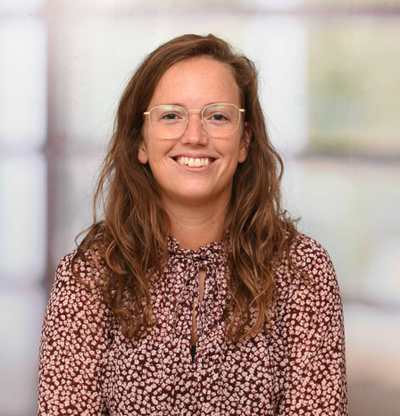Advancements in margin assessment for oncological surgery - Integrating diffuse reflectance spectroscopy and ultrasound imaging
Freija Geldof is a PhD student in the department Nanobiophysics. Promotors are prof.dr. T.J.M. Ruers from the faculty of Science & Technology and prof.dr. I.A.M.J. Broeders from the faculty of Electrical Engineering, Mathematics and Computer Science.
 Cancer surgery is a complex procedure, in which surgeons strive to maintain a delicate balance between completely removing all tumor tissue and preserving as much of the surrounding healthy tissue as possible. Inadequate tumor removal, i.e. positive resection margins, can have severe consequences for patients, such as increased risks of tumor recurrence and decreased survival rates, while excessive tissue removal can lead to complications and adversely affect patients' quality of life. Identifying tumor boundaries during surgery can, however, be challenging. Currently, surgical margin assessment relies on time-consuming histopathological analysis, resulting in delayed feedback to surgeons. Consequently, there is a long-lasting need for an intraoperative margin assessment technique that can provide real-time and accurate feedback during oncological surgery, without the need for extensive technical or radiological support.
Cancer surgery is a complex procedure, in which surgeons strive to maintain a delicate balance between completely removing all tumor tissue and preserving as much of the surrounding healthy tissue as possible. Inadequate tumor removal, i.e. positive resection margins, can have severe consequences for patients, such as increased risks of tumor recurrence and decreased survival rates, while excessive tissue removal can lead to complications and adversely affect patients' quality of life. Identifying tumor boundaries during surgery can, however, be challenging. Currently, surgical margin assessment relies on time-consuming histopathological analysis, resulting in delayed feedback to surgeons. Consequently, there is a long-lasting need for an intraoperative margin assessment technique that can provide real-time and accurate feedback during oncological surgery, without the need for extensive technical or radiological support.
This thesis addressed this unmet need by investigating two distinct, yet complementary, modalities: diffuse reflectance spectroscopy (DRS) and ultrasound (US) imaging. DRS is a fast and non-invasive optical technique, which measures the diffusely reflected light across multiple wavelengths to create a distinct “optical fingerprint” of the measured tissue, thereby enabling discrimination between healthy and tumor tissue. US imaging is a widely used imaging modality in the medical field, which provides real-time visualization of tissue structures through high-frequency sound waves.
The thesis aimed to enhance intraoperative guidance by developing machine and deep learning algorithms for automatic tumor detection, segmentation, and margin prediction up to several millimeters in depth using DRS and US data. Furthermore, the added value of a multimodal approach was explored, combining the strengths of DRS and US imaging to further enhance the precision of surgical margin assessment. The last part of this thesis focused on clinical implementation aspects, including the development of more compact DRS probes and solutions for sterile in vivo use.


